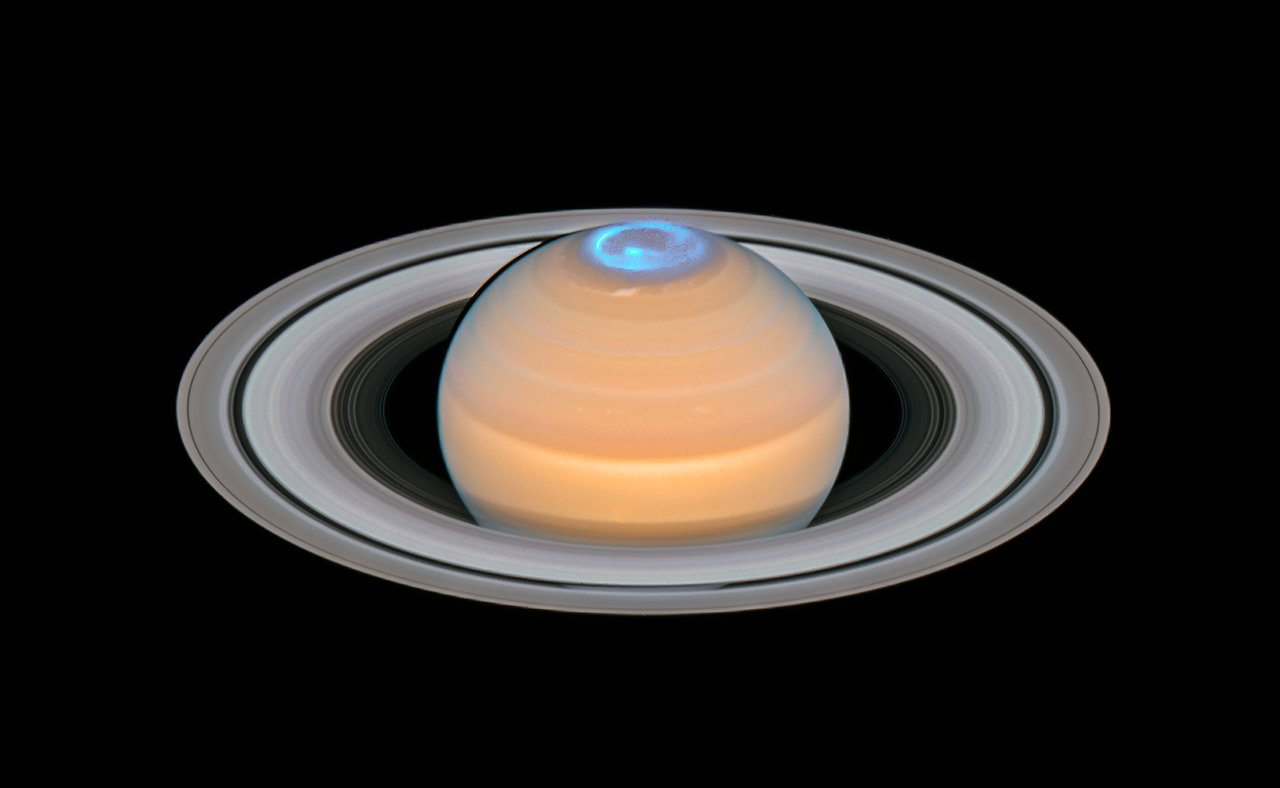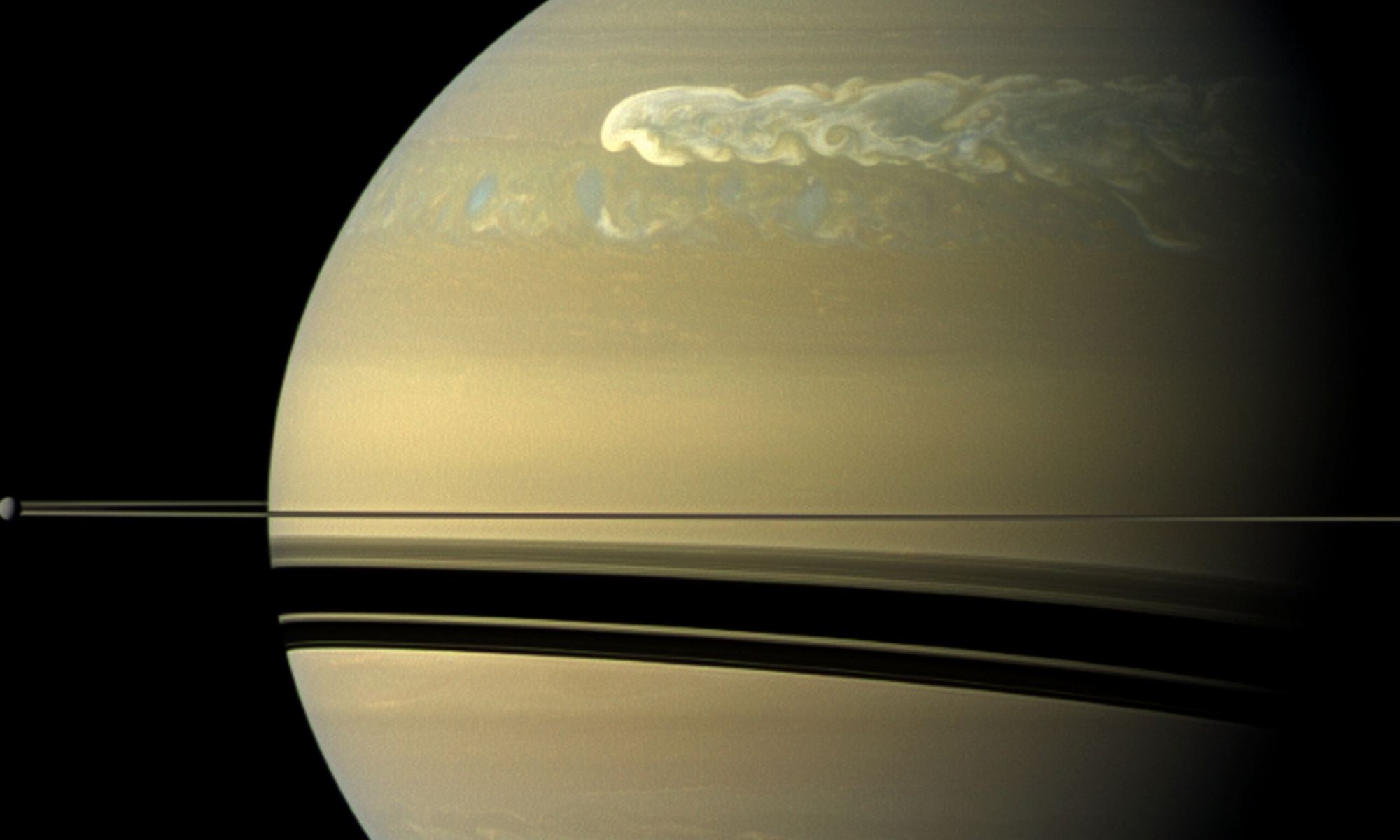Earth releases about as much energy out into space as it absorbs, arriving at a thermal equilibrium. This means it will reach an average temperature as is the case with most planets. Saturn however, is a little different as recent observations show the planet’s energy is out of balance. It seems that in addition to the energy it receives from the Sun, there must also be an internal source of heat, perhaps driven by its highly elliptical orbit.
Continue reading “Saturn’s Energy is Out of Balance”Saturn’s “Death Star Moon” Mimas Probably has an Ocean Too

A recent study published in Nature presents a groundbreaking discovery that Saturn’s moon, Mimas, commonly known as the “Death Star” moon due to its similarities with the iconic Star Wars space station, possesses an internal ocean underneath its rocky crust. This study was conducted by an international team of researchers and holds the potential to help planetary geologists better understand the conditions for a planetary body to possess an internal ocean, which could also possess the conditions for life as we know it. While Mimas was photographed on several occasions by NASA’s Cassini spacecraft, including a close flyby in February 2010, what was the motivation behind this recent study regarding finding an internal ocean on Mimas?
Continue reading “Saturn’s “Death Star Moon” Mimas Probably has an Ocean Too”It’s Time for Saturn’s “Spokes” to Return
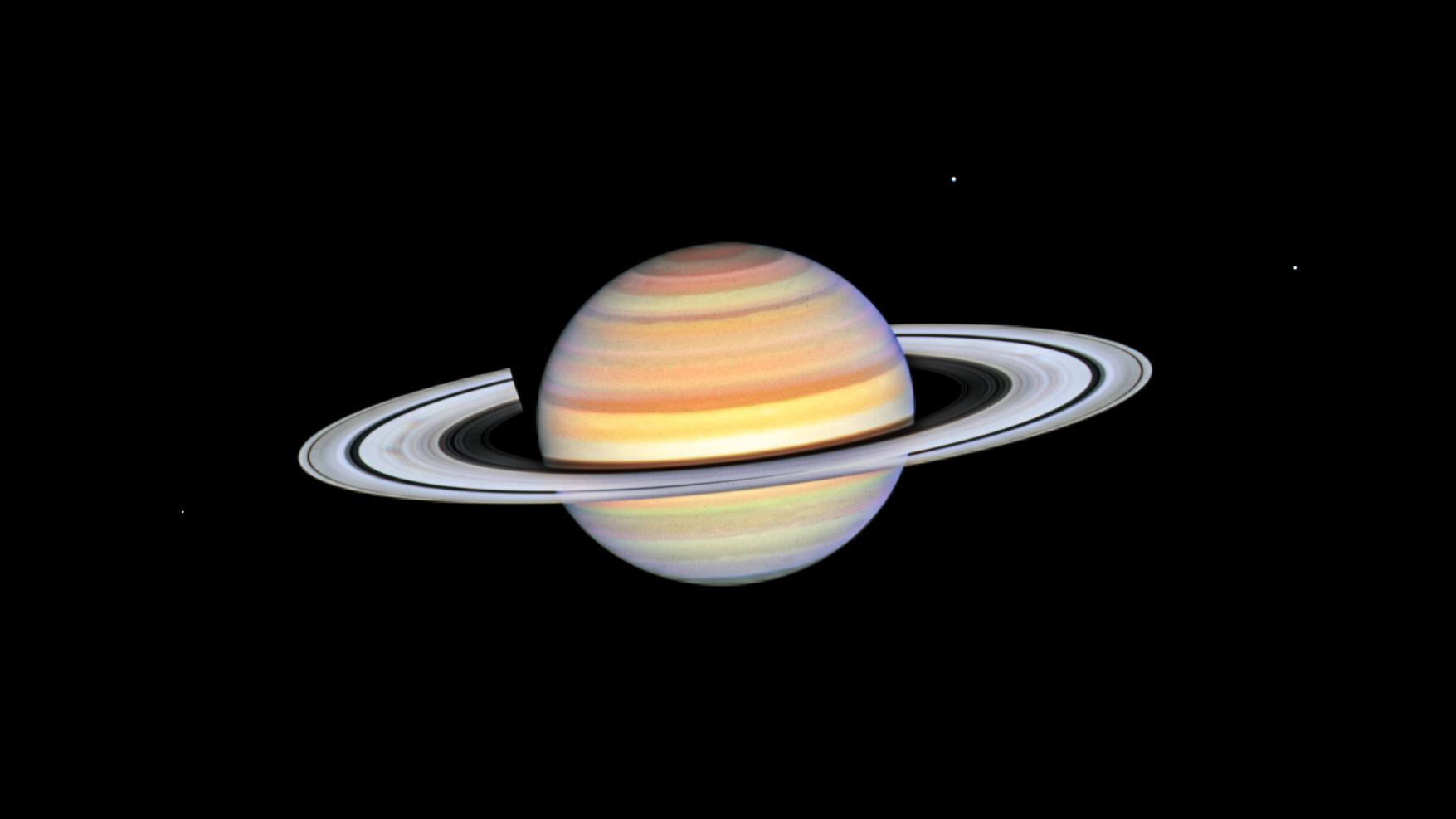
Astronomers have been observing Saturn with the Hubble Space Telescope and several other spacecraft for decades and have noticed something unusual. During seasonal changes, transient spoke-like features appear in the rings. These dark, ghostly blobs orbit around the planet 2-3 times, and then disappear.
As Saturn is approaching its equinox, this is prime spoke activity time. Once again, Hubble has been called to gaze at Saturn, tracking the behavior of the spokes and hopefully giving astronomers more clues as to why they occur.
Continue reading “It’s Time for Saturn’s “Spokes” to Return”In the Shadow of Saturn’s Rings
I can remember it very well, although not actually sure when it was, back around 1995/1996 I think. I was, like most other keen stargazers very familiar with the sight of Saturn with rings and all. Indeed the view of Saturn with its rings was one of the first things I had ever seen through a telescope and it inspired me into a lifetime passion of exploring the night sky. Every 15 years though, the Earth passes through the plane of the rings and from Earth they seem to vanish. Now, an astronomer has used data taken during such ring plane crossings from the Cassini spacecraft to measure the transparency of the rings.
Continue reading “In the Shadow of Saturn’s Rings”Saturn’s Rings will Disappear in 2025. Don’t Worry, They’ll Return Soon Enough
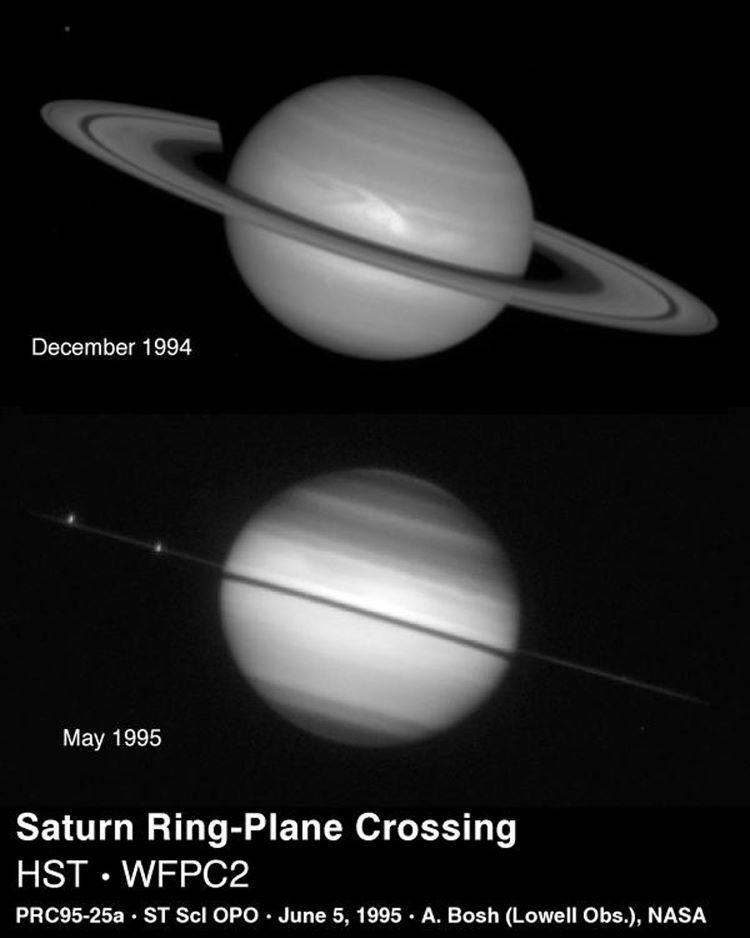
The rings of Saturn are some of the most well-known and captivating spectacles in the night sky, which are so large they can easily be observed with amateur telescopes or even a pair of high-powered binoculars. However, from time to time, Saturn’s rings “disappear” from view, a phenomenon known ring-plane crossing, with the rings being observed as a flat line running straight through the massive gas giant. Ring-plane crossing occurs approximately every 15 years and is slated to happen next in March 2025, with the rings slowly getting “larger” in the months afterwards before “disappearing” again in November 2025. But what causes ring-plane crossing?
Continue reading “Saturn’s Rings will Disappear in 2025. Don’t Worry, They’ll Return Soon Enough”Colliding Moons Might Have Created Saturn’s Rings
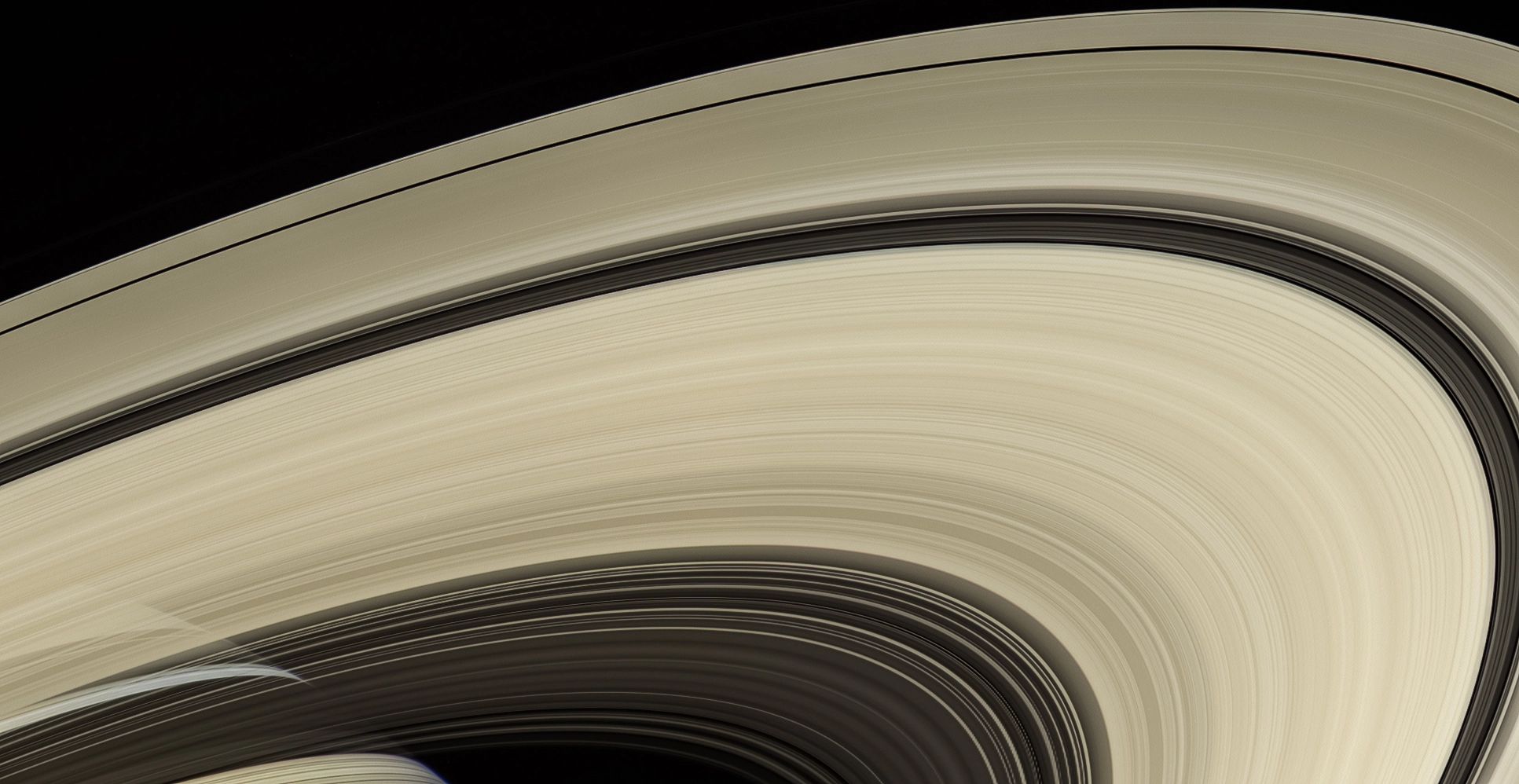
If we could wind the clock back billions of years, we’d see our Solar System the way it used to be. Planetesimals and other rocky bodies were constantly colliding with each other, and new objects would coalesce out of the debris. Asteroids rained down on the planets and their moons. The gas giants were migrating and contributing to the chaos by destroying gravitational relationships and creating new ones. Even moons and moonlets would’ve been part of the cascade of collisions and impacts.
When nature crams enough objects into a small enough space, it breeds collisions. A new study says that’s what happened at Saturn and created the planet’s dramatic rings.
Continue reading “Colliding Moons Might Have Created Saturn’s Rings”The Seasons on Saturn are Changing. It's Time to Say Goodbye to Its North Pole for a Few Years

Just like Earth, Saturn goes through seasons because of its axial tilt. But a year on Saturn lasts 30 Earth years, so each of its seasons lasts 7.5 years. Right now, it is late summer on Saturn’s northern hemisphere, so again, just like Earth is currently heading for northern autumn equinox in September, Saturn is heading for northern autumn equinox a little later, in 2025.
Before Saturn’s north pole enters its extended polar winter – rendering it inaccessible for observations — astronomers are taking advantage of being able to study this area with the James Webb Space Telescope, which became operational just over a year ago.
Continue reading “The Seasons on Saturn are Changing. It's Time to Say Goodbye to Its North Pole for a Few Years”Storms on Saturn Can Have Impacts That Last for Hundreds of Years
The Great Red Spot of Jupiter is a storm that has raged for hundreds of years. It was first observed by Gian Domenico Cassini in 1665, and except for a period between 1713 to 1830, it has been observed continuously ever since. Even if Cassini’s storm is not the one we see today, the current red spot has been around for nearly two centuries. While great storms appear now and then on Saturn and other gas planets, they don’t have the staying power of Jupiter’s great storm. Or so we thought.
Continue reading “Storms on Saturn Can Have Impacts That Last for Hundreds of Years”Here Come JWST’s First Images of Saturn
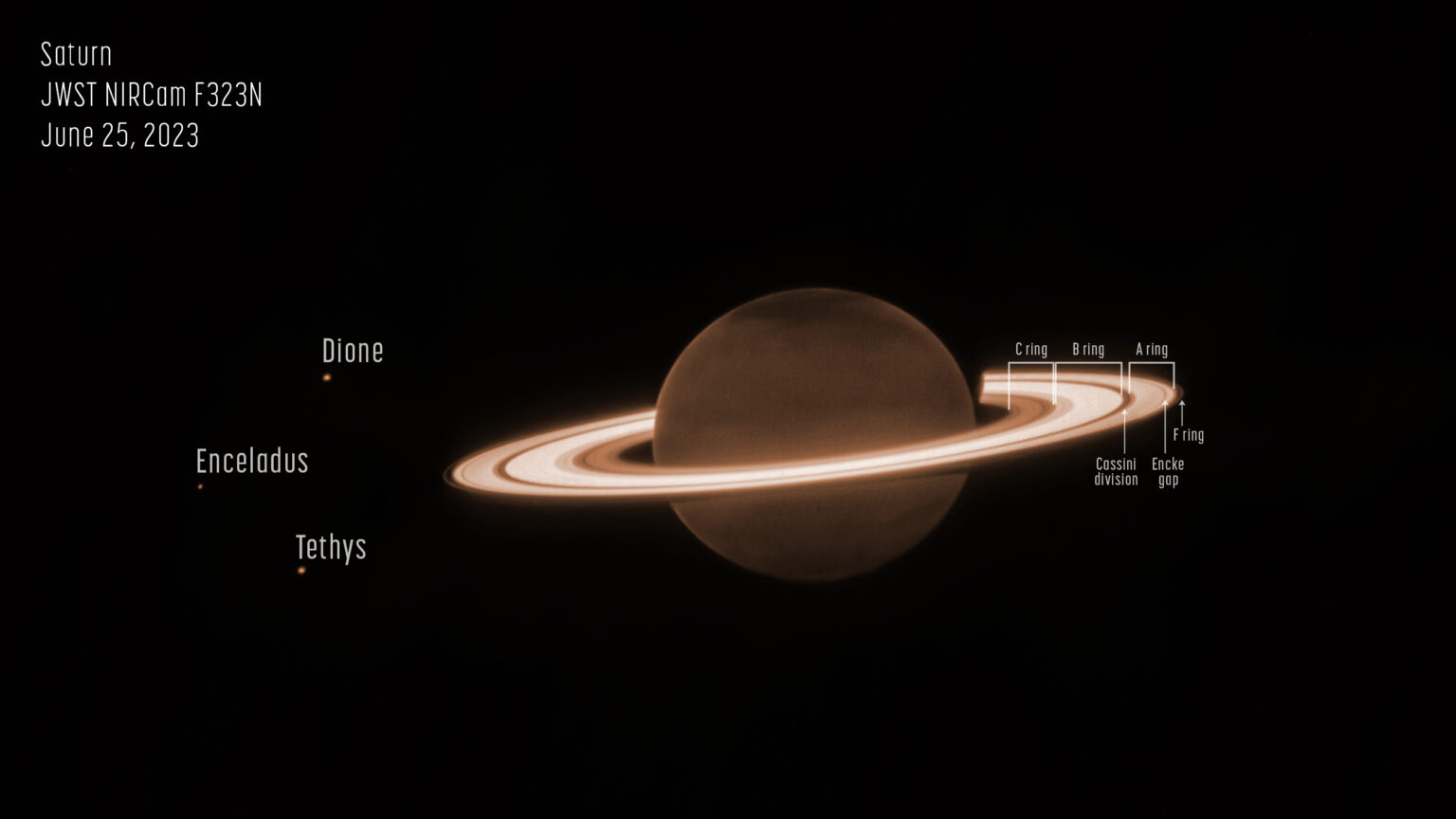
Note: This story has been updated with new images.
It’s Saturn’s turn.
The JWST is aiming its powerful, gold-coated, segmented beryllium mirror at our Solar System’s second-largest, and perhaps most striking, planet. So far, we’ve only got a sneak preview of the raw images without any processing or scientific commentary.
But they’re a start.
Continue reading “Here Come JWST’s First Images of Saturn”One Spacecraft Could Visit All of Saturn's Inner Large Moons

If you’ve ever played Kerbal Space Program, you know how difficult it can be to get your spacecraft into the orbit you want. It’s even more difficult in real life. This is why it’s pretty impressive to see a proposal to study all of Saturn’s large inner moons in one go.
Continue reading “One Spacecraft Could Visit All of Saturn's Inner Large Moons”

